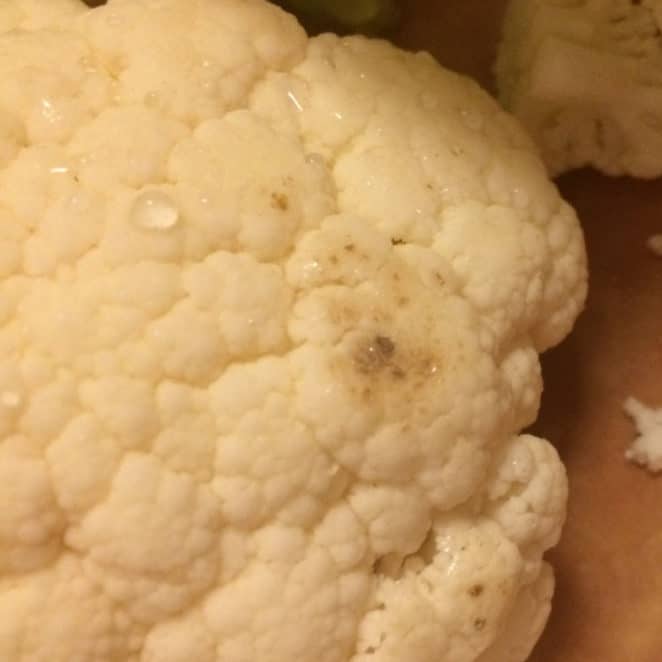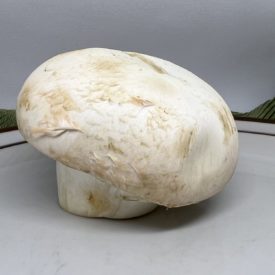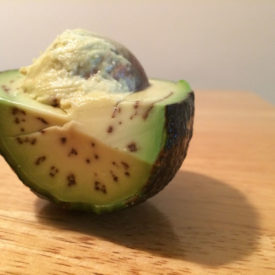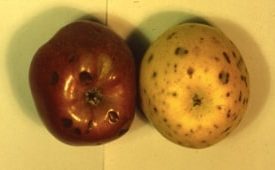
What you see: Brown spots on cauliflower.
What it is: Bruising, most likely from bumping into other cauliflower heads, or cold temperatures.
Eat or toss: Eat! This is just a minor injury, though the cauliflower is more vulnerable to rot, so don’t delay.
Can you eat cauliflower with brown spots and dots?
Yes! If your head of cauliflower has some brown spots and dots, it’s probably still fine to eat. Those are simply bruises.
You’ll want to check, however, and make sure that the brown areas are still firm and aren’t squishy, slimy, stinky or showing any other signs of rot or mold growth. If the brown areas have a mushy texture, put them in the compost.
Why do cauliflower get brown spots?
First, consider that cauliflowers are just big tender heads.
As cruciferous vegetables go, cauliflower is harvested when it’s particularly immature, when the curds made up of little buds on its head are still hard and barely resemble the flowers they’d bloom into, if only we left them the field.
Their immaturity also makes them more fragile. So, even though cauliflower can seem frustratingly hard when you’re chopping it for your favorite recipe, it also bruises easily.
(Speaking of favorite cauliflower recipes, here’s mine, though I add way more garlic and rosemary and bake both right in.)
Cauliflower with simple brown spots should still be safe to eat
When you picture crates of cauliflowers traveling in trucks, it’s easy to imagine how they could bruise each other on a bumpy ride. On impact, their cells can rupture or otherwise suffer damage that causes chemicals to leak and mingle with each other and oxygen. All this results in oxidation that brings about that brown color. Too-cold storage temps can also hurt the cells enough for them to release the enzymes that lead to browning.
“It’s not going to hurt you, it just doesn’t look good visually,” said Chris Gunter, vegetable production specialist at North Carolina State University. “With cauliflower, you’re dealing with an immature inflorescence. So the shelf life is really delicate.”
(That’s right — inflorescence. That pretty word refers to a cluster of flowers on a branch or cluster of branches.)
Should you cut off brown areas on cauliflower?
If you’re planning to cook the cauliflower, I wouldn’t bother. If you’re serving raw florets and want to be cautious, maybe, but only because those spot are more vulnerable.
Are black spots on cauliflower OK to eat?
Black spots are more likely to be fungal growth. Not a dinner-stopping problem, but your best bet is to cut them off.
Can you prevent brown spots on cauliflower?
They probably occurred on the way to the store. But if you’re gentle with your cauliflower and make sure it doesn’t have any high-impact encounters in your grocery bags or fridge, that could help.
What should you do if your cauliflower has brown spots?
As usual, the evidence of some damaged cells means you should prioritize eating; it’s now on a faster track to going bad. Inspect for signs any opportunistic microbes or fungus may have set up shop (i.e. visible mold, soft, rotting tissue, or black dots). If all you’re seeing are these brown freckles, then go ahead and make that cauliflower mash, or gratin or “steak” or …. Mmm. cauliflower is so good, right?
SOURCES:
- Chris Gunter. Vegetable Production Specialist. Associate Professor. North Carolina State University.
- Cauliflower – Curd discoloration. International Produce Training.
- Cauliflower – Recommendations for maintaining post-harvest quality. Trevor V. Suslow and Marita Cantwell. Department of Plant Sciences, University of California, Davis
- On Food and Cooking: The Science and Lore of the Kitchen. Harold McGee. p. 269. “Enzymatic browning.”
When cauliflower head butts.
Updated January 2024











